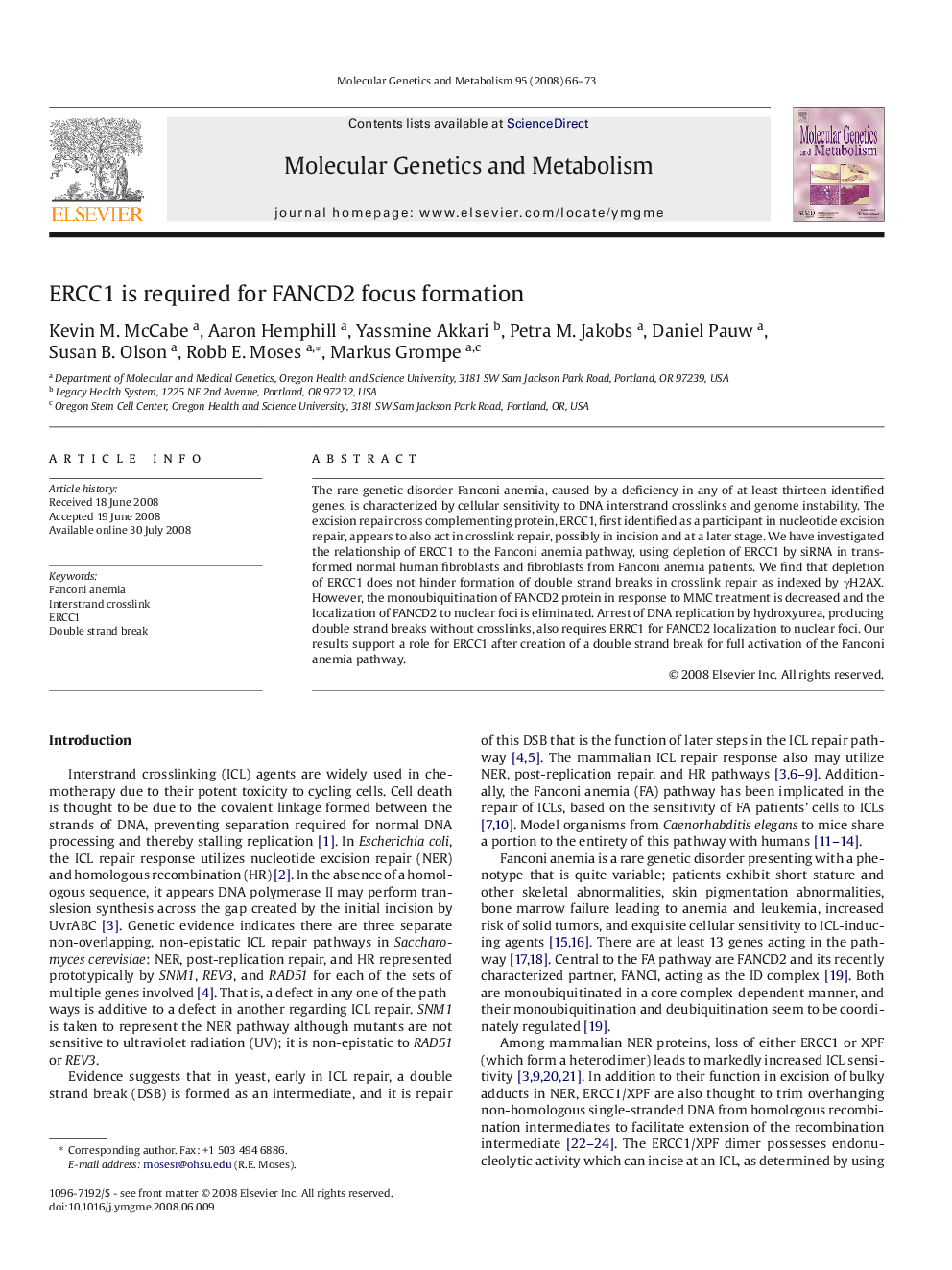| Article ID | Journal | Published Year | Pages | File Type |
|---|---|---|---|---|
| 1999113 | Molecular Genetics and Metabolism | 2008 | 8 Pages |
The rare genetic disorder Fanconi anemia, caused by a deficiency in any of at least thirteen identified genes, is characterized by cellular sensitivity to DNA interstrand crosslinks and genome instability. The excision repair cross complementing protein, ERCC1, first identified as a participant in nucleotide excision repair, appears to also act in crosslink repair, possibly in incision and at a later stage. We have investigated the relationship of ERCC1 to the Fanconi anemia pathway, using depletion of ERCC1 by siRNA in transformed normal human fibroblasts and fibroblasts from Fanconi anemia patients. We find that depletion of ERCC1 does not hinder formation of double strand breaks in crosslink repair as indexed by γH2AX. However, the monoubiquitination of FANCD2 protein in response to MMC treatment is decreased and the localization of FANCD2 to nuclear foci is eliminated. Arrest of DNA replication by hydroxyurea, producing double strand breaks without crosslinks, also requires ERRC1 for FANCD2 localization to nuclear foci. Our results support a role for ERCC1 after creation of a double strand break for full activation of the Fanconi anemia pathway.
